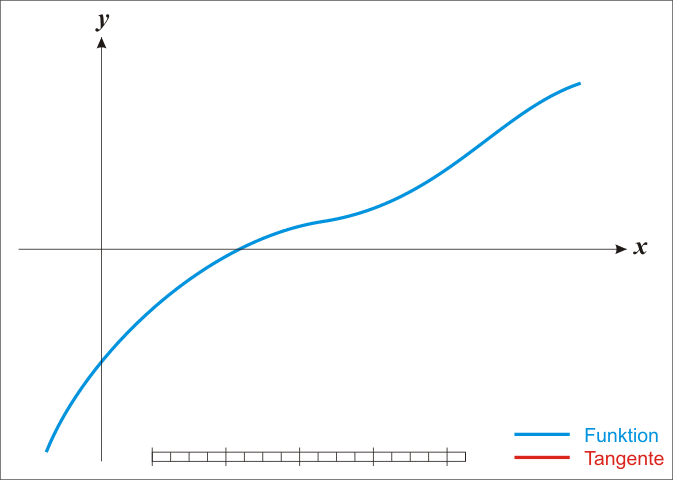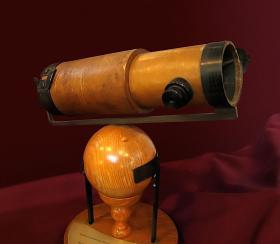牛顿法
起源
牛顿法最初由艾萨克·牛顿在《流数法》(Method of Fluxions,1671年完成,在牛顿死后的1736年公开发表)中提出。约瑟夫·拉弗森也曾于1690年在Analysis Aequationum中提出此方法。
方法说明

蓝线表示方程f{\displaystyle f}

而红线表示切线。可以看出xn+1{\displaystyle x_{n+1}}

比xn{\displaystyle x_{n}}

更靠近f{\displaystyle f}

所要求的根x{\displaystyle x}

。
首先,选择一个接近函数f(x){\displaystyle f(x)}零点的x0{\displaystyle x_{0}},计算相应的f(x0){\displaystyle f(x_{0})}和切线斜率f′(x0){\displaystyle f"(x_{0})}(这里f′{\displaystyle f"}表示函数f{\displaystyle f}的导数)。然后我们计算穿过点(x0,f(x0)){\displaystyle (x_{0},f(x_{0}))}并且斜率为f′(x0){\displaystyle f"(x_{0})}的直线和x{\displaystyle x}轴的交点的x{\displaystyle x}坐标,也就是求如下方程的解:
我们将新求得的点的x{\displaystyle x}坐标命名为x1{\displaystyle x_{1}},通常x1{\displaystyle x_{1}}会比x0{\displaystyle x_{0}}更接近方程f(x)=0{\displaystyle f(x)=0}的解。因此我们现在可以利用x1{\displaystyle x_{1}}开始下一轮迭代。迭代公式可化简为如下所示:
已经证明,如果f′{\displaystyle f"}是连续的,并且待求的零点x{\displaystyle x}是孤立的,那么在零点x{\displaystyle x}周围存在一个区域,只要初始值x0{\displaystyle x_{0}}位于这个邻近区域内,那么牛顿法必定收敛。
并且,如果f′(x)≠ ≠ -->0{\displaystyle f"(x)\neq 0},那么牛顿法将具有平方收敛的性能。粗略的说,这意味着每迭代一次,牛顿法结果的有效数字将增加一倍。
其它例子
第一个例子
求方程cos -->(x)− − -->x3=0{\displaystyle \cos(x)-x^{3}=0}的根。令f(x)=cos -->(x)− − -->x3{\displaystyle f(x)=\cos(x)-x^{3}},两边求导,得f′(x)=− − -->sin -->(x)− − -->3x2{\displaystyle f"(x)=-\sin(x)-3x^{2}}。由于− − -->1≤ ≤ -->cos -->(x)≤ ≤ -->1(∀ ∀ -->x){\displaystyle -1\leq \cos(x)\leq 1(\forall x)},则− − -->1≤ ≤ -->x3≤ ≤ -->1{\displaystyle -1\leq x^{3}\leq 1},即− − -->1≤ ≤ -->x≤ ≤ -->1{\displaystyle -1\leq x\leq 1},可知方程的根位于0{\displaystyle 0}和1{\displaystyle 1}之间。我们从x0=0.5{\displaystyle x_{0}=0.5}开始。
第二个例子
牛顿法亦可发挥与泰勒展开式,对于函式展开的功能。
求a{\displaystyle a}的m{\displaystyle m}次方根。
xm− − -->a=0{\displaystyle x^{m}-a=0}
设f(x)=xm− − -->a{\displaystyle f(x)=x^{m}-a},f′(x)=mxm− − -->1{\displaystyle f"(x)=mx^{m-1}}
而a的m次方根,亦是x的解,
以牛顿法来迭代:
xn+1=xn− − -->f(xn)f′(xn){\displaystyle x_{n+1}=x_{n}-{\frac {f(x_{n})}{f"(x_{n})}}}
xn+1=xn− − -->xnm− − -->amxnm− − -->1{\displaystyle x_{n+1}=x_{n}-{\frac {x_{n}^{m}-a}{mx_{n}^{m-1}}}}
xn+1=xn− − -->xnm(1− − -->axn− − -->m){\displaystyle x_{n+1}=x_{n}-{\frac {x_{n}}{m}}(1-ax_{n}^{-m})}
(或 xn+1=xn− − -->1m(xn− − -->axnxnm){\displaystyle x_{n+1}=x_{n}-{\frac {1}{m}}\left(x_{n}-a{\frac {x_{n}}{x_{n}^{m}}}\right)})
免责声明:以上内容版权归原作者所有,如有侵犯您的原创版权请告知,我们将尽快删除相关内容。感谢每一位辛勤著写的作者,感谢每一位的分享。

- 有价值
- 一般般
- 没价值








24小时热门
推荐阅读

关于我们

APP下载


























{{item.time}} {{item.replyListShow ? '收起' : '展开'}}评论 {{curReplyId == item.id ? '取消回复' : '回复'}}